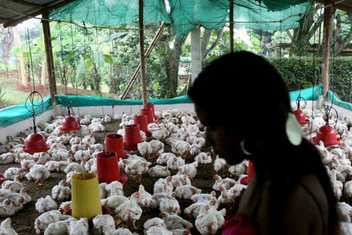WHO Chief Scientist discusses high mortality rate of H5N1 virus and potential risks of human-to-human transmission

April 18, 2024
Dr. Jeremy Farrar of WHO warns about the potential threat of the H5N1 avian influenza virus, highlighting its high mortality rate and the need for close monitoring amid an outbreak among dairy cows.
Dr Jeremy Farrar, Chief Scientist at the World Health Organization (WHO), said that the avian influenza virus – which is also known as H5N1 – has had an “extremely high” mortality rate among the several hundred people known to have been infected with it to date.
To date, no human-to-human H5N1 transmission has been recorded.
“H5N1 is (an) influenza infection, predominantly started in poultry and ducks and has spread effectively over the course of the last one or two years to become a global zoonotic – animal – pandemic,” he said.
“The great concern, of course, is that in doing so and infecting ducks and chickens – but now increasingly mammals – that that virus now evolves and develops the ability to infect humans. And then critically, the ability to go from human-to-human transmission.”
Cattle mystery
Commenting on an ongoing outbreak of H5N1 virus among dairy cows in the United States, the WHO senior official urged further close monitoring and investigation by public health authorities, “because it may evolve into transmitting in different ways”.
He added: “Do the milking structures of cows create aerosols? Is it the environment which they’re living in? Is it the transport system that is spreading this around the country? This is a huge concern and I think we have to … make sure that if H5N1 did come across to humans with human-to-human transmission, that we were in a position to immediately respond with access equitably to vaccines, therapeutics and diagnostics.”
SOURCE: United Nations


